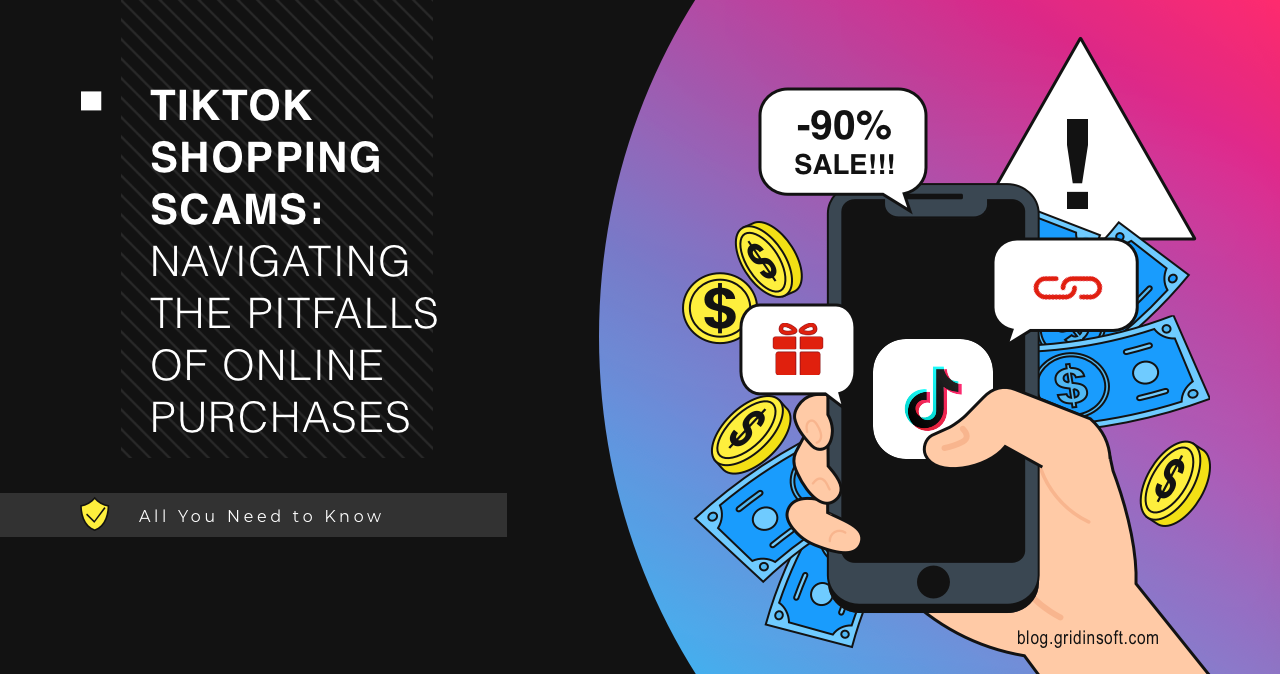TikTok shopping scams is a new attack vector on online shoppers. Immense popularity of the Chinese social network led to addition of shopping functionality to the application. This, however, attracted fraudulent actors who aim at parasitizing on peoples’ unawareness about potential scams. In this article, I am going to explain how these scams work, and how you can detect them before it is too late.
The Rise of TikTok as a Shopping Hub
TikTok, known for its engaging content and for starting the trend of reel videos, has now got shopping functionality, attracting businesses to connect their stores with it. Thus, a staggering 48% of TikTok users have reportedly made app purchases, as The Better Business Bureau noted. This surge in e-commerce activity brings the peril of scams, where false advertisements and deceitful practices threaten to exploit the unwary shopper. Especially when the target audience is teenagers and youngsters who have no idea what scams are on the internet.
Understanding Scams on TikTok
We’ve looked at Instagram scams before; things are less widespread there, but TikTok is also trying to catch up. To know what to avoid, you need to understand how it works. Now we will look at the most common TikTok shopping scams:
Fake Products and Sellers
Since the beginning, the TikTok marketplace was conceived as a place where sellers could sell their goods at discounted prices, which was profitable. The problem is that the goods being promoted are not always genuine. In addition, there have been cases where the seller disappeared from TikTok after the item was purchased. Some scammers try to pass themselves off as genuine businesses. However, the main indication that it is a scam is that the product is sold at an over low price. Buying a product known to be fake is a waste of money.

This actually repeats the most widespread type of scams from other social media. Scams on Facebook or YouTube base on promoting a page with incredible discounts. Though, some specific features of TikTok allow for other directions of frauds.
Malicious Links in Bio
Scammers often place harmful links in their TikTok bio descriptions. They claim to offer free rewards, content downloads, coupon codes, etc. Usually, these links lead to Telegram channels that have nothing to do with what was promised. But sometimes, these links can cause installing malware, stealing login credentials, or just redirecting to harmful sites.

Money-Making Promises
A related scam is often promoted alongside shopping scams. Crooks make false promises of money or expensive prizes in exchange for a small upfront payment or personal information. In reality, they are just trying to trick you. Frauds use enticing offers of fast cash to trap you into giving away your personal and financial information or paying for fraudulent products. This includes Ponzi schemes, fraudulent apps, and other tactics used to lure you in.

Youth at Risk
TikTok draws marketers for its unique ability to connect with younger people. However, beneath the fascinating content, there’s an underbelly. This is especially alarming because young people are not highly aware of TikTok shopping scams and are easily influenced by bad influences.
According to the same study, the most significant users who have purchased on the platform are between 10 and 19 years old. Overall, users between 10 and 29 comprise over 50% of the platform’s user base. Although TikTok vets its sellers and removes products that violate the platform’s Terms of Service, that doesn’t stop scammers. If a user violates these policies, their account may be temporarily disabled or even permanently deleted. But it’s easy for crooks to create a new account.
Recommendations for Users
Unfortunately, with any new service, there is a possibility of fraud. This is especially true for online shopping, as verifying a seller’s identity or background can be difficult. Consumers should vigilantly follow online shopping safety tips when using TikTok Shop. The following tips can help you save time and finances:
- Research the seller before you buy. It is essential to research the seller and their website before making a purchase. Prioritize purchasing from verified sellers, identifiable by a blue tick mark on their pages. If you see a product on TikTok doesn’t guarantee its authenticity or the seller’s trustworthiness.
- Read comments and reviews. Checking comments and reviews from other users is an effective way to assess new sellers. Additionally, you can utilize TikTok’s search bar to find videos uploaded by previous customers showcasing the products they bought. This will help you better understand the quality of the products being offered.
- Explore the return policy. You should watch out if the contact information is shady or unclear. According to TikTok Shop’s return policy, customers can request a return or refund within 30 days of receiving their package.
- Pay attention to the URL. Always inspect the URL of retailer websites. Most retail websites have simple URLs like louisvuitton.com or cultbeauty.co.uk. However, if you see extra characters in the URL and additional words such as “super discounts,” “deals,” or “offers,” it’s probably a scam. This is especially true for online stores with “.shop,” “.site,” “.fun,” and “.top” domains.
Remember, Tiktok never asks for a password or any other confidential information. Any messages or emails sent with such requests are fraudulent. The easiest and most effective way to remove a fraudulent store is to send a report. If you notice suspicious activity, you can report it via a special form.




